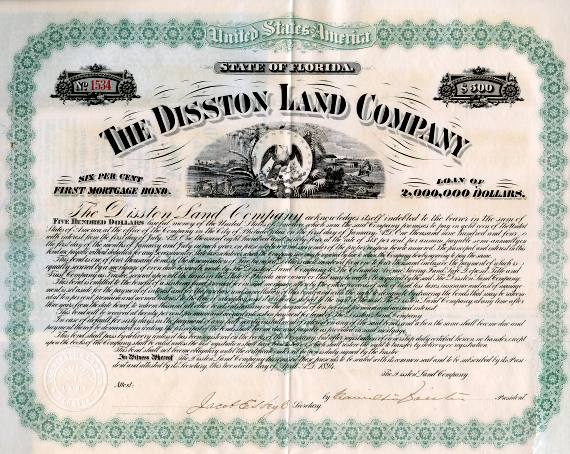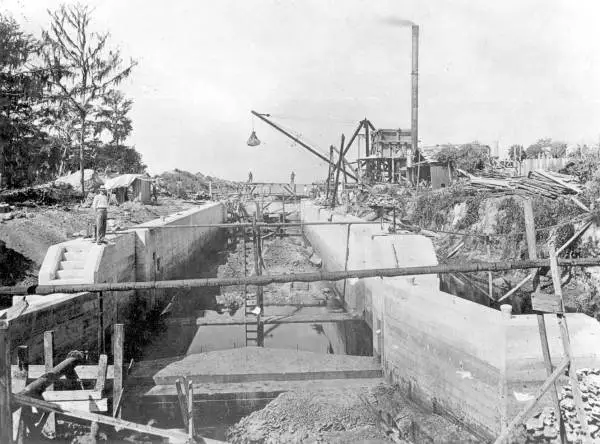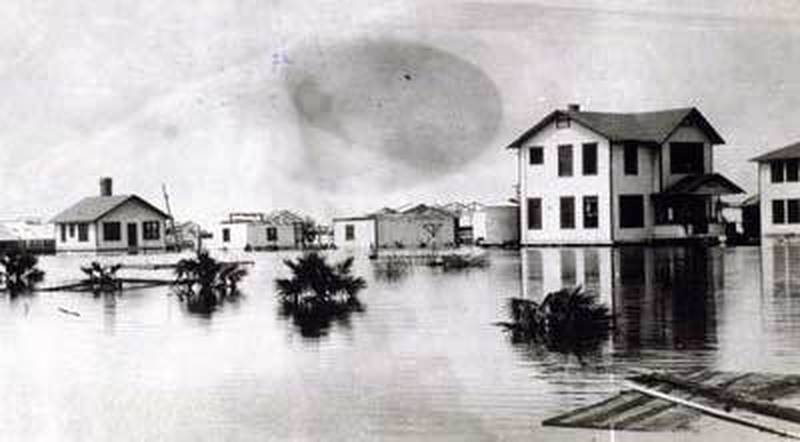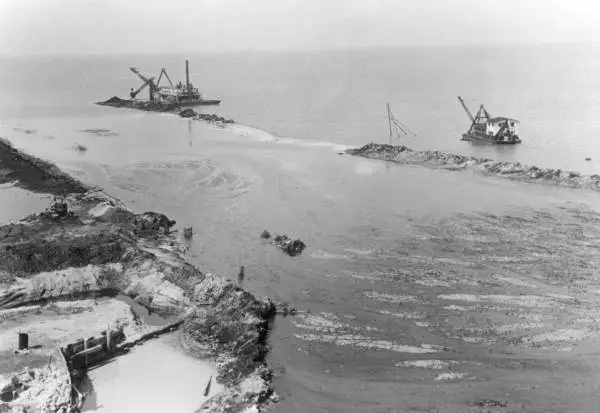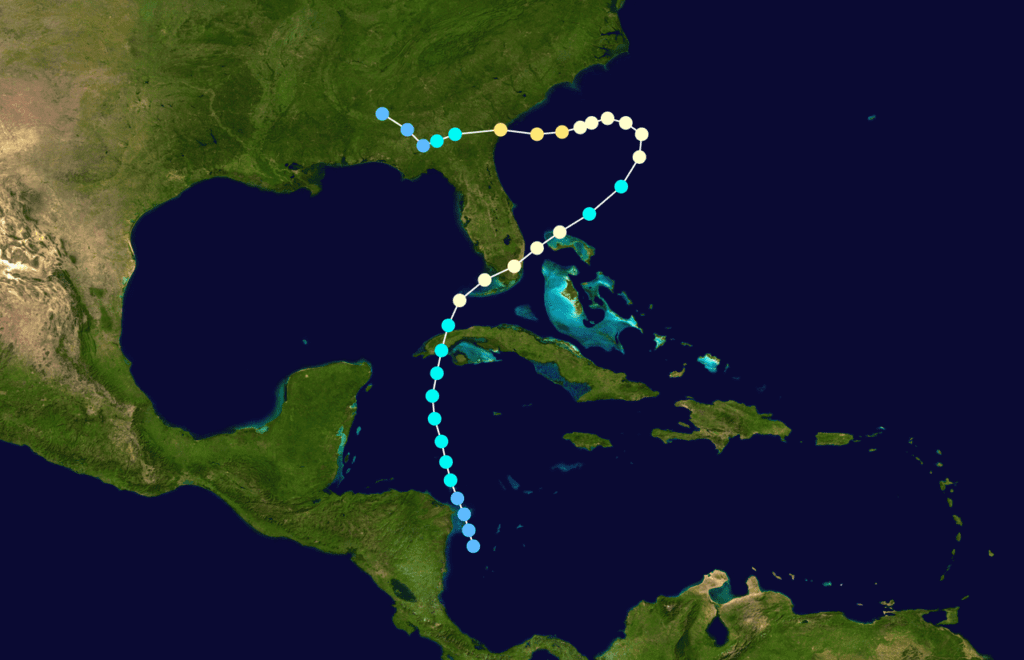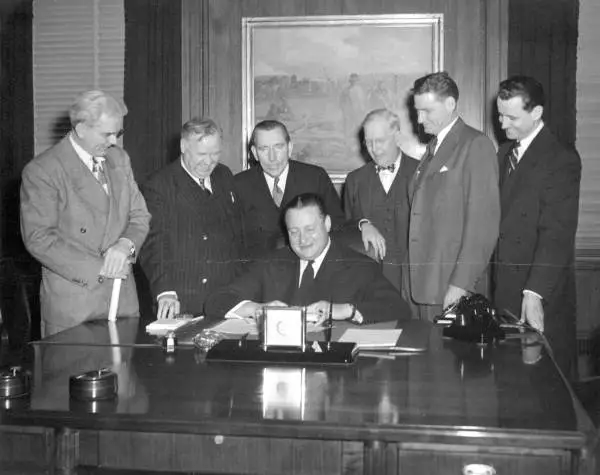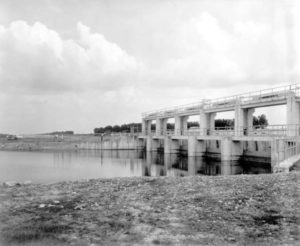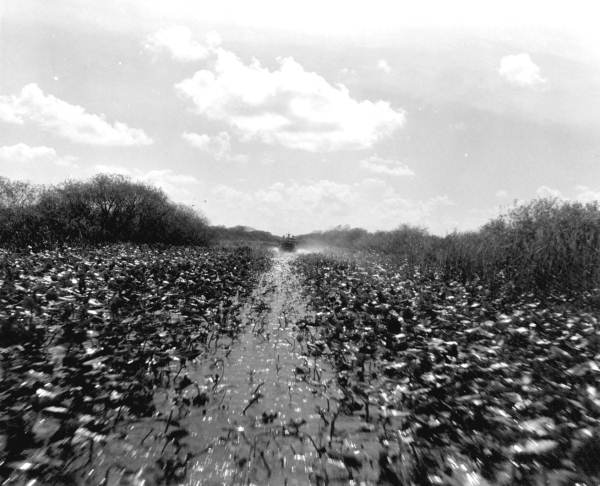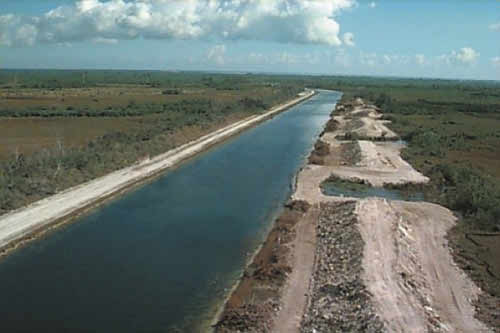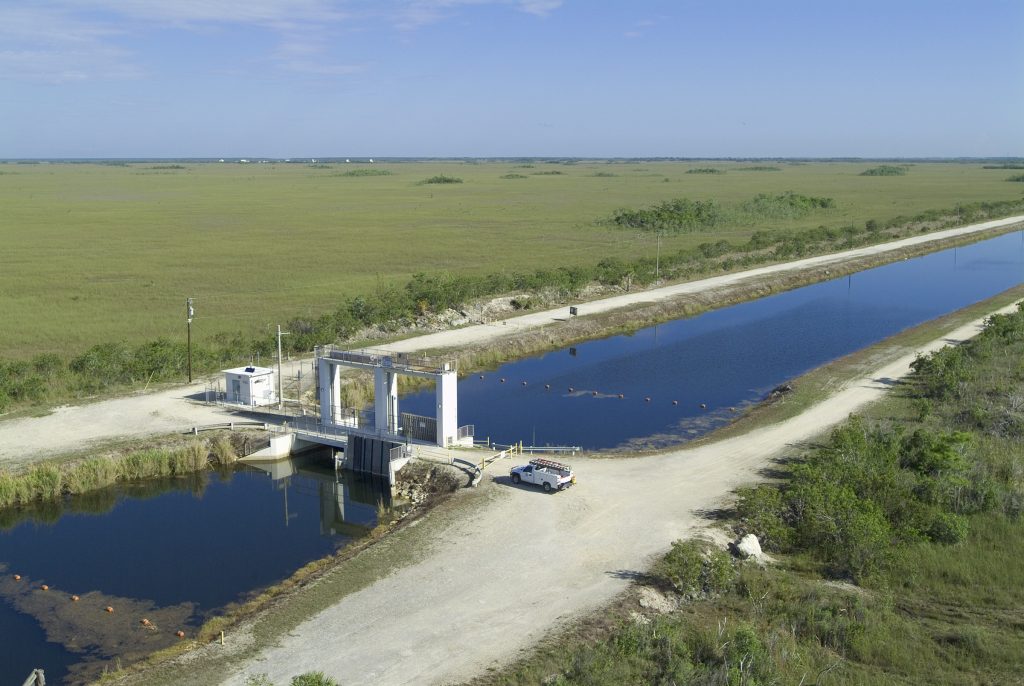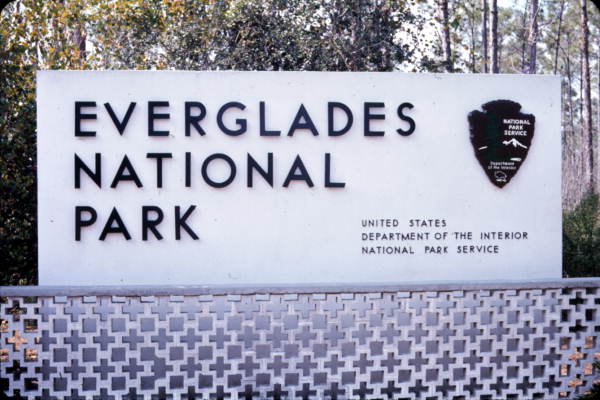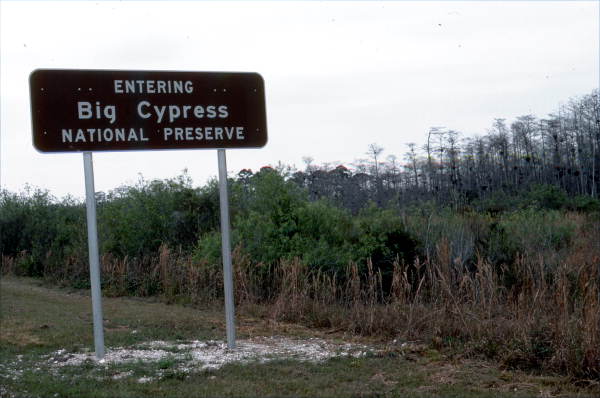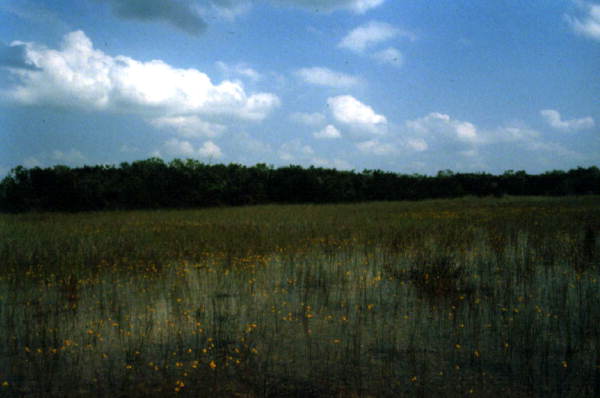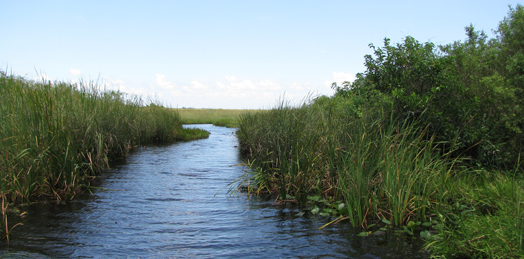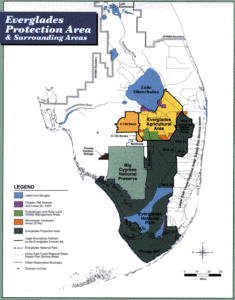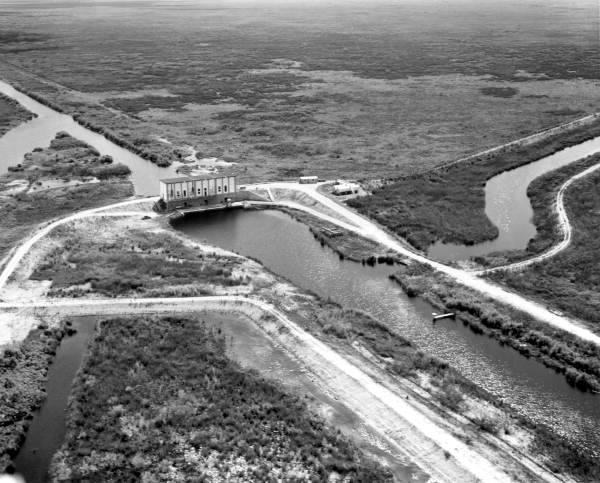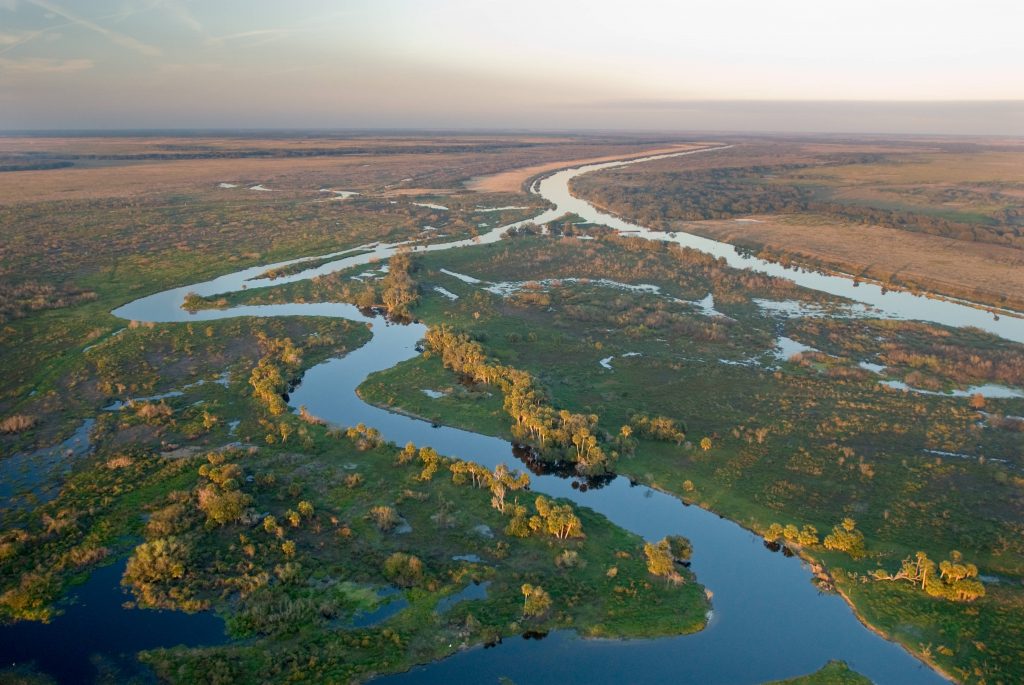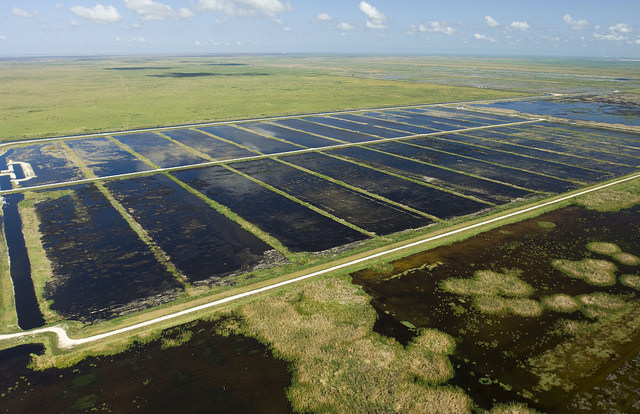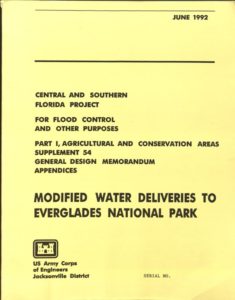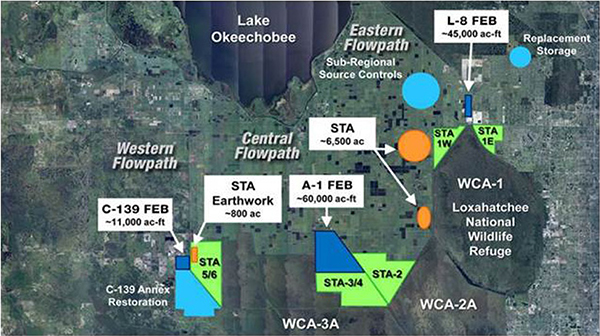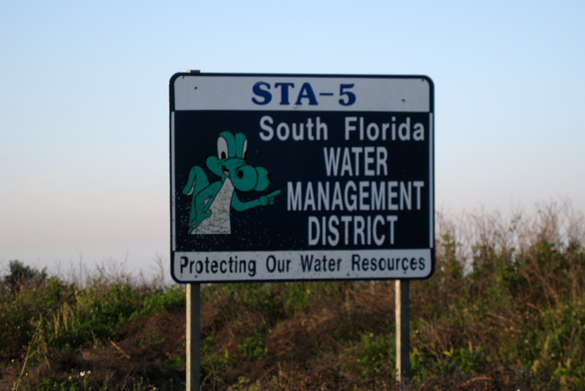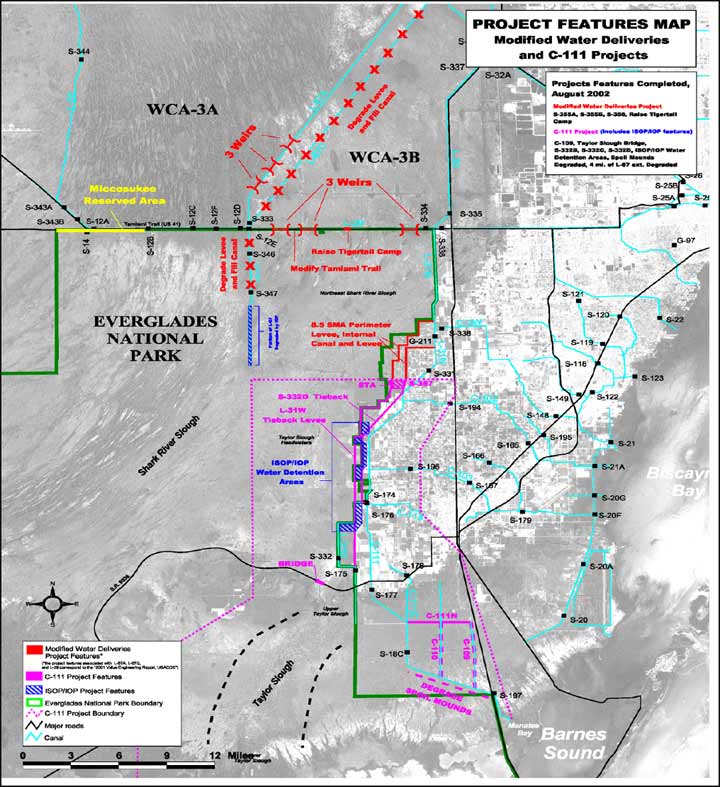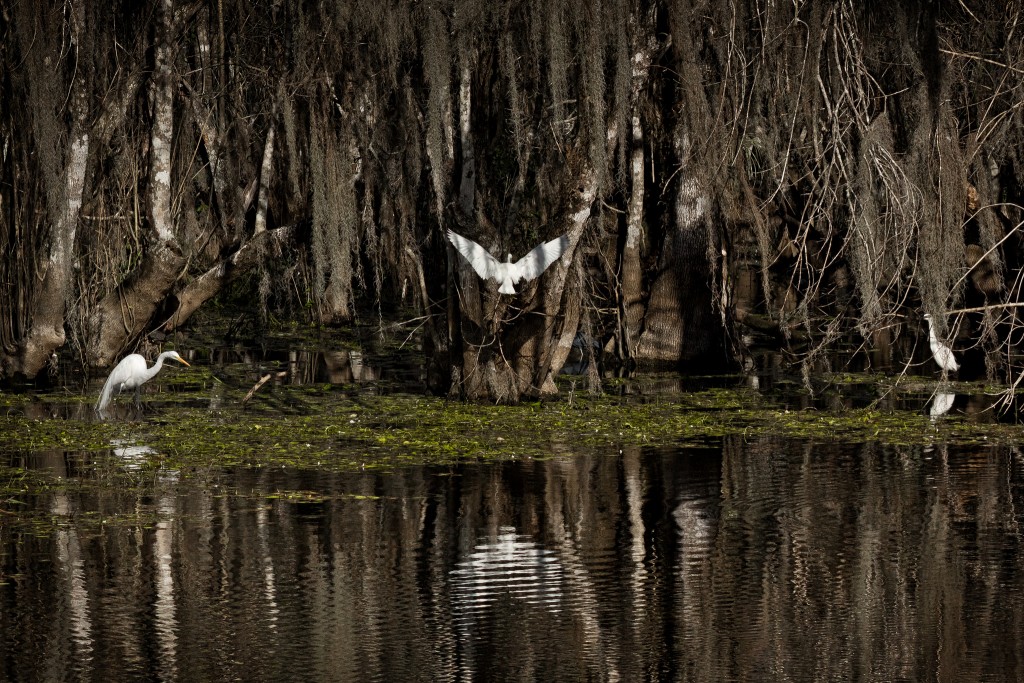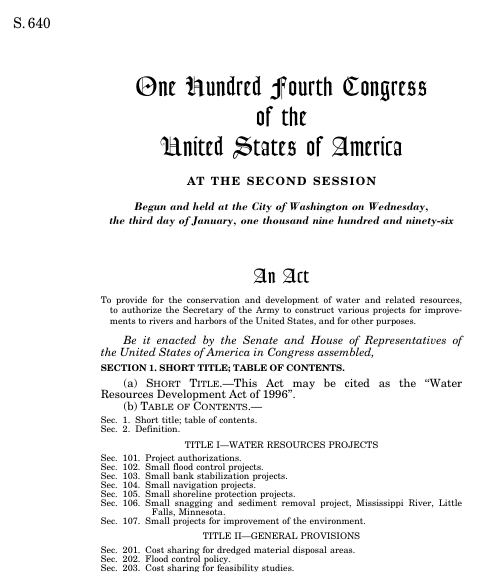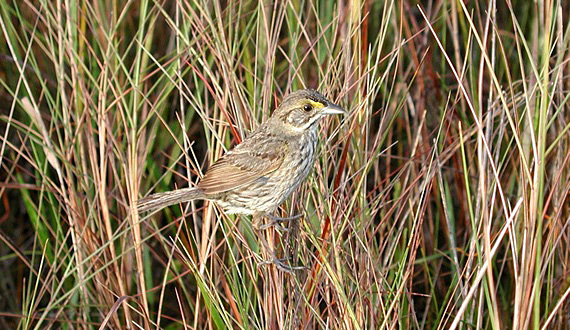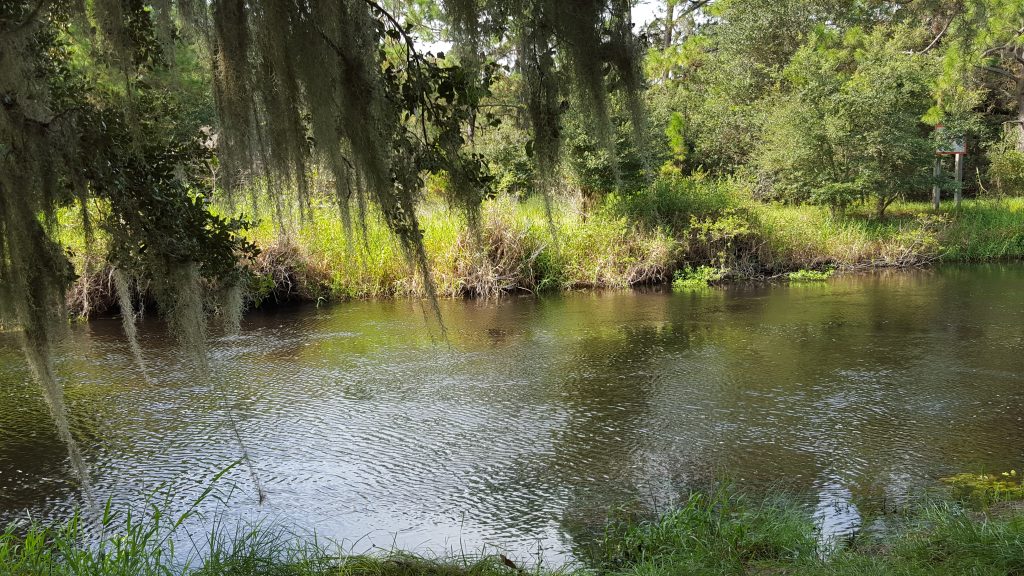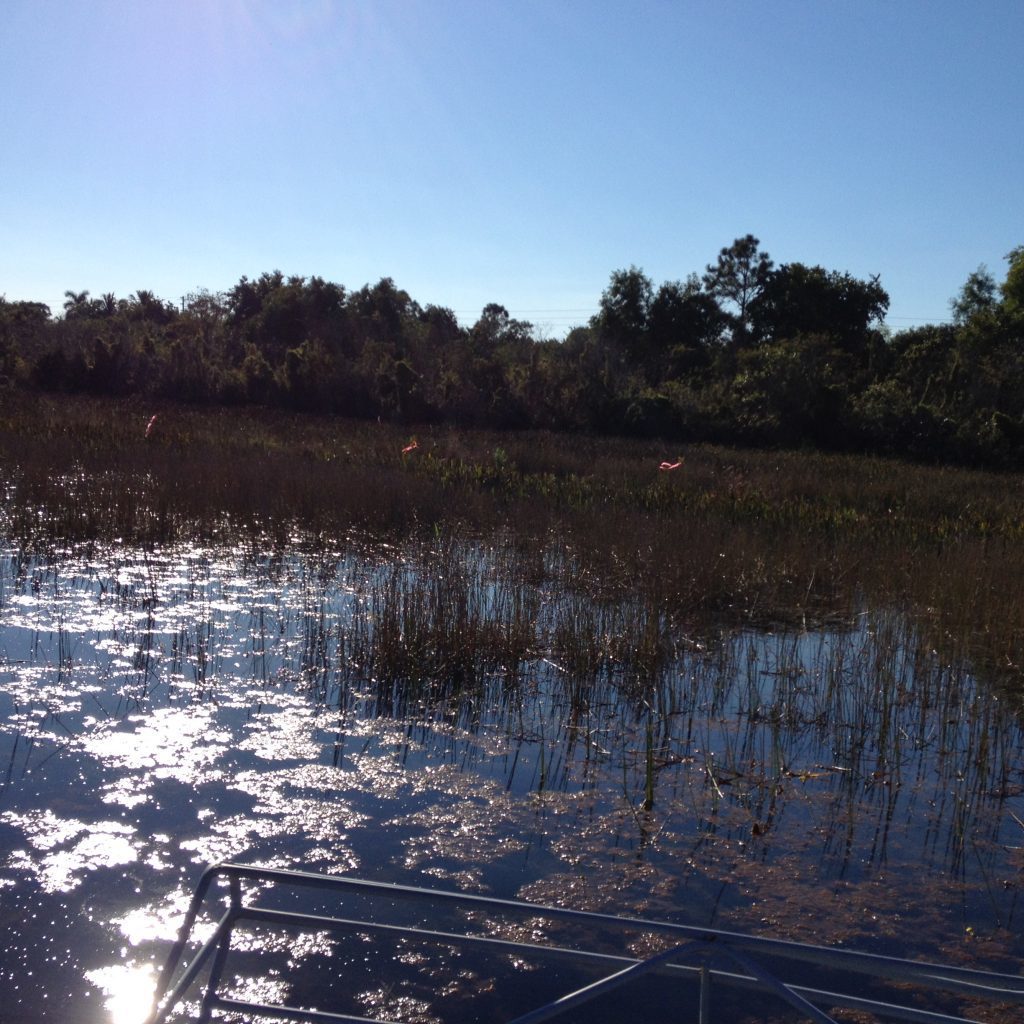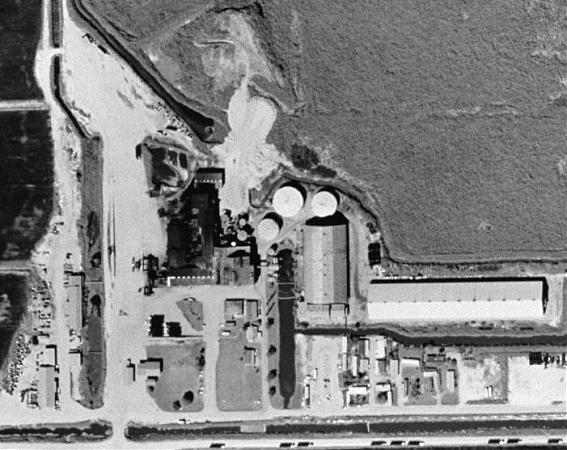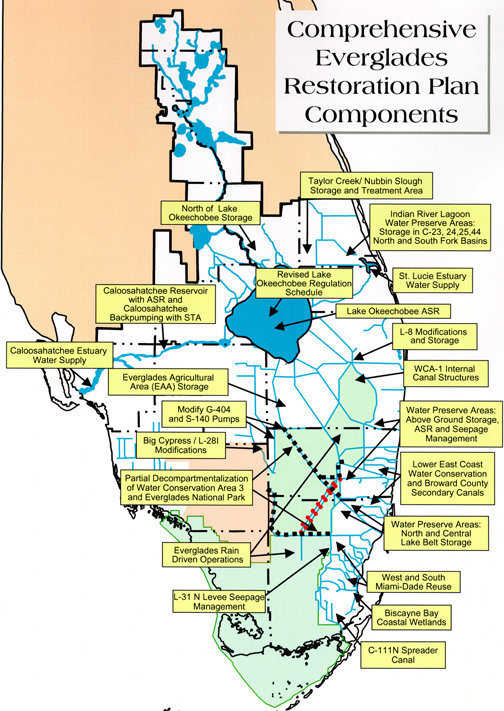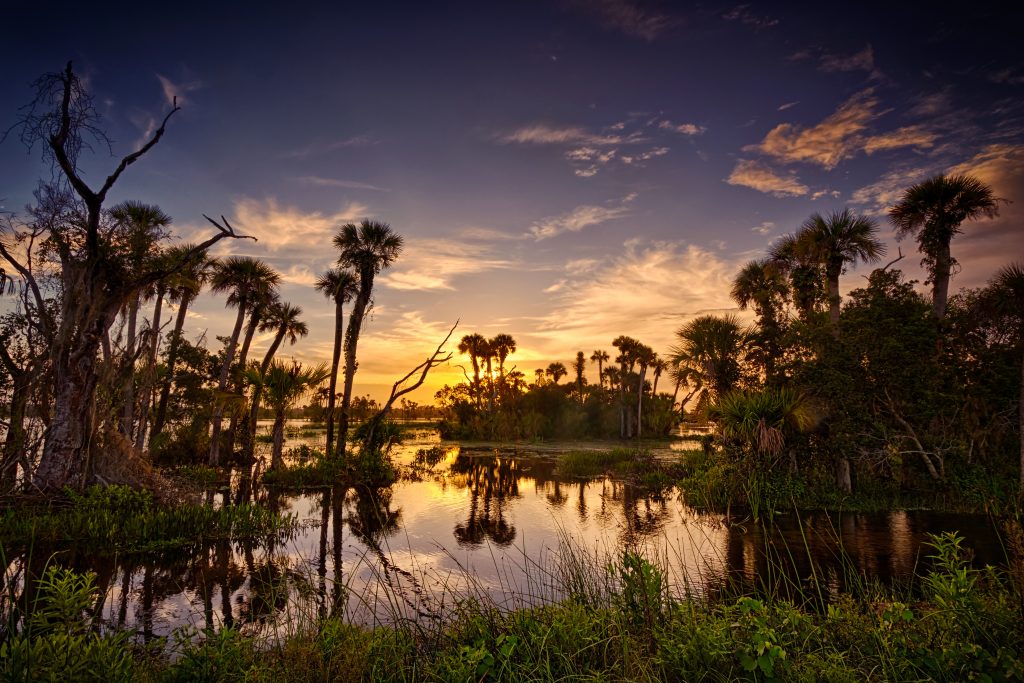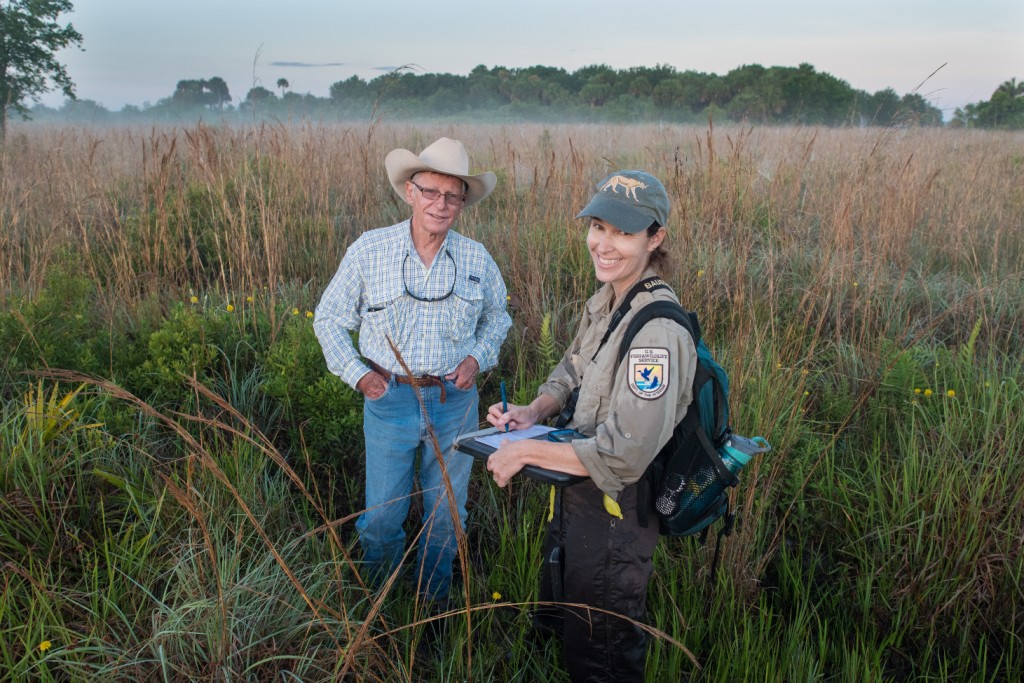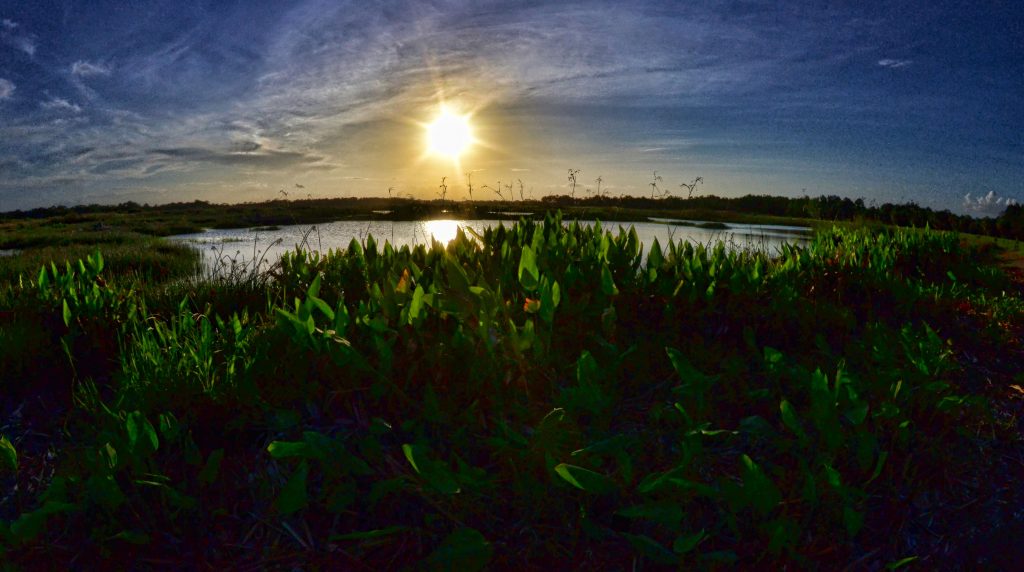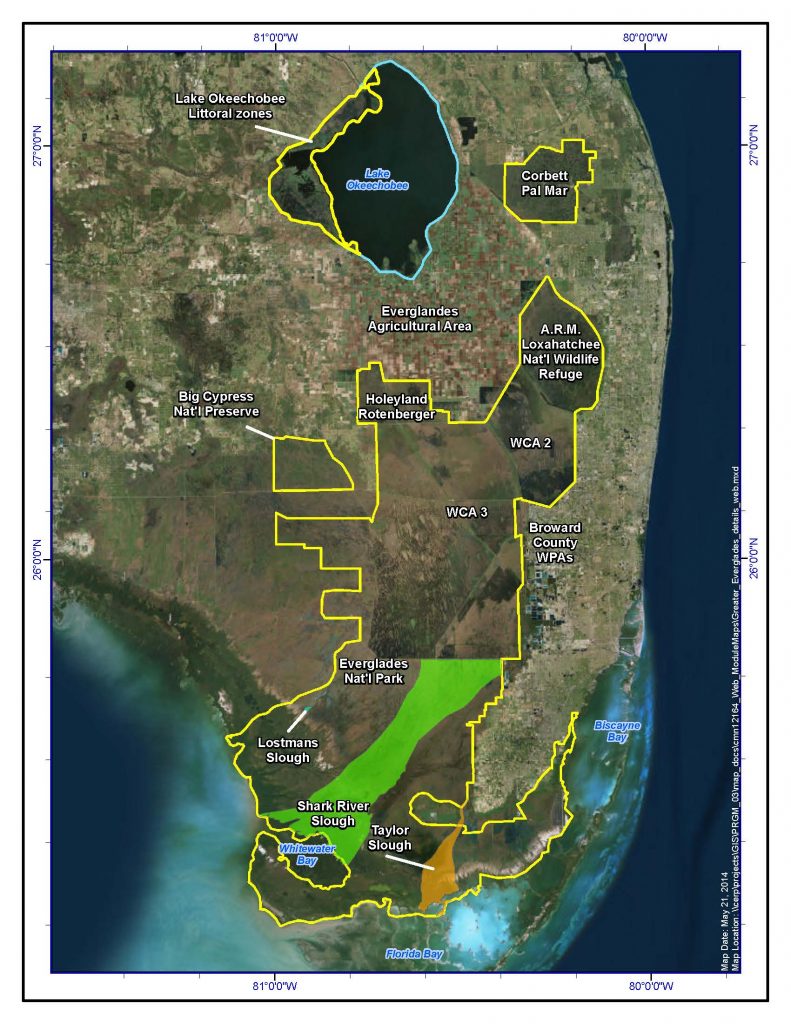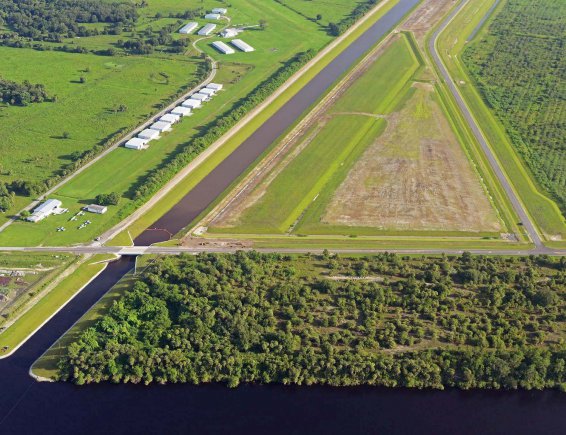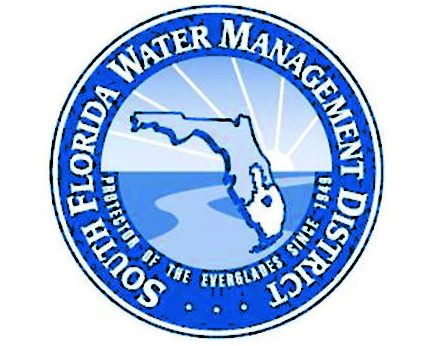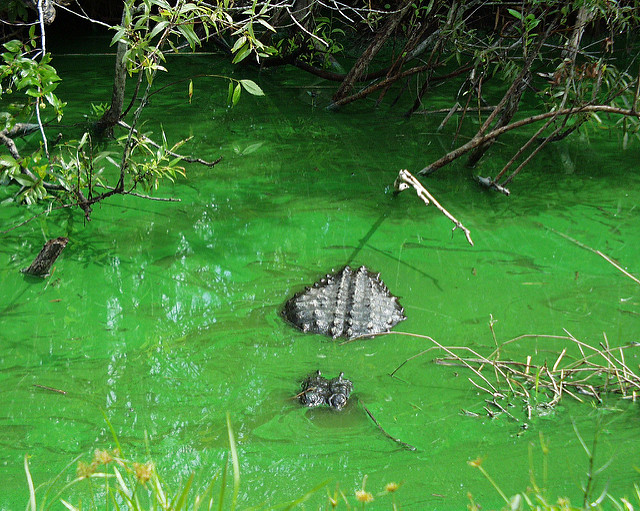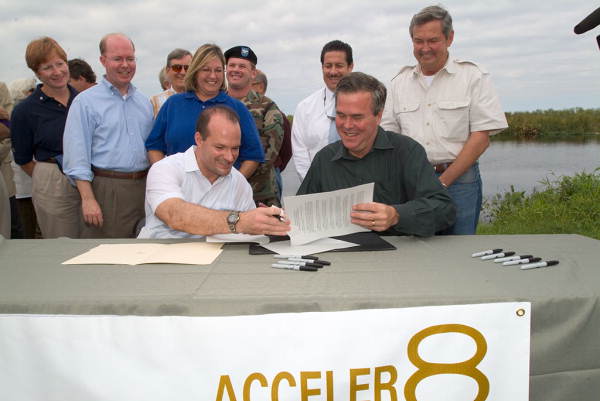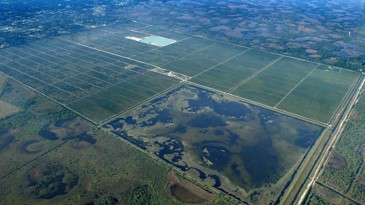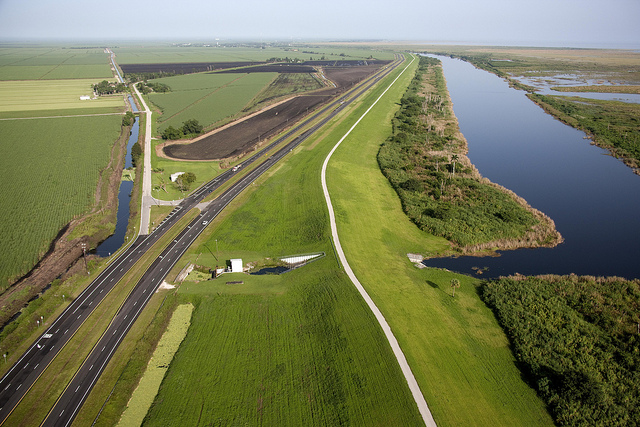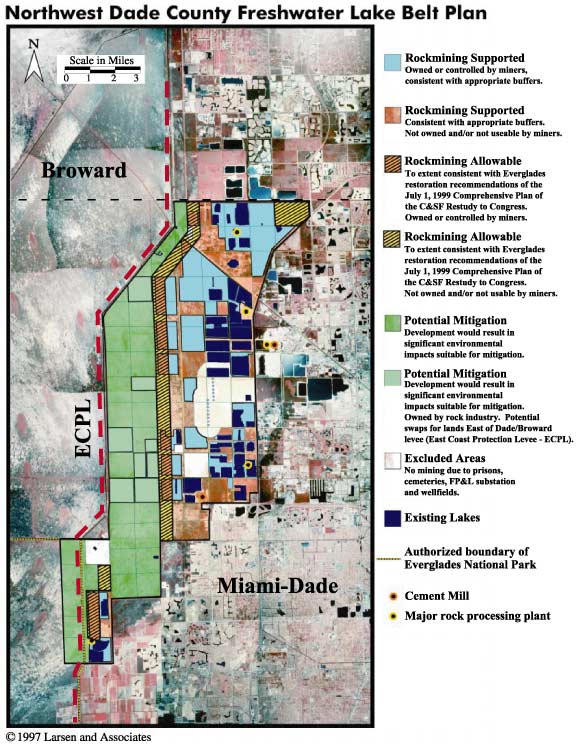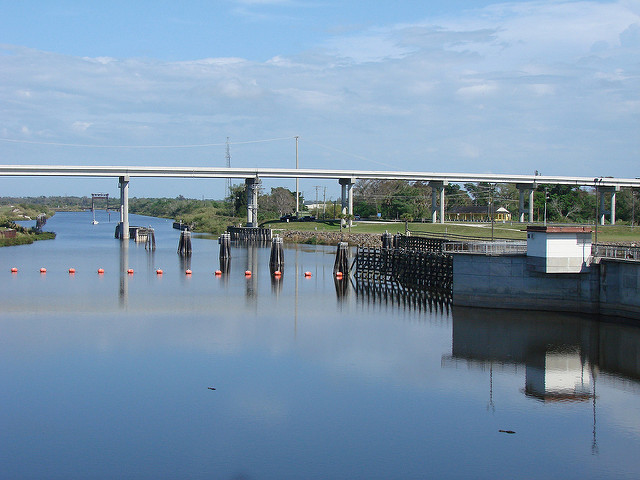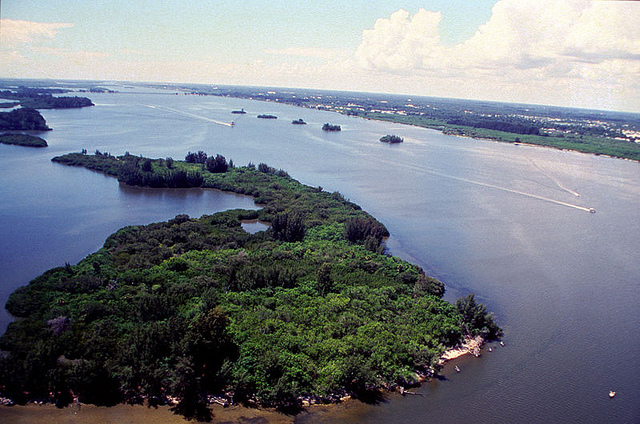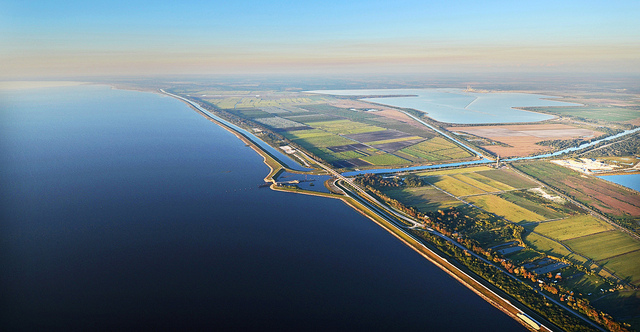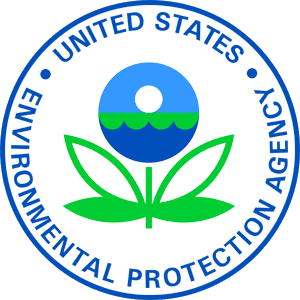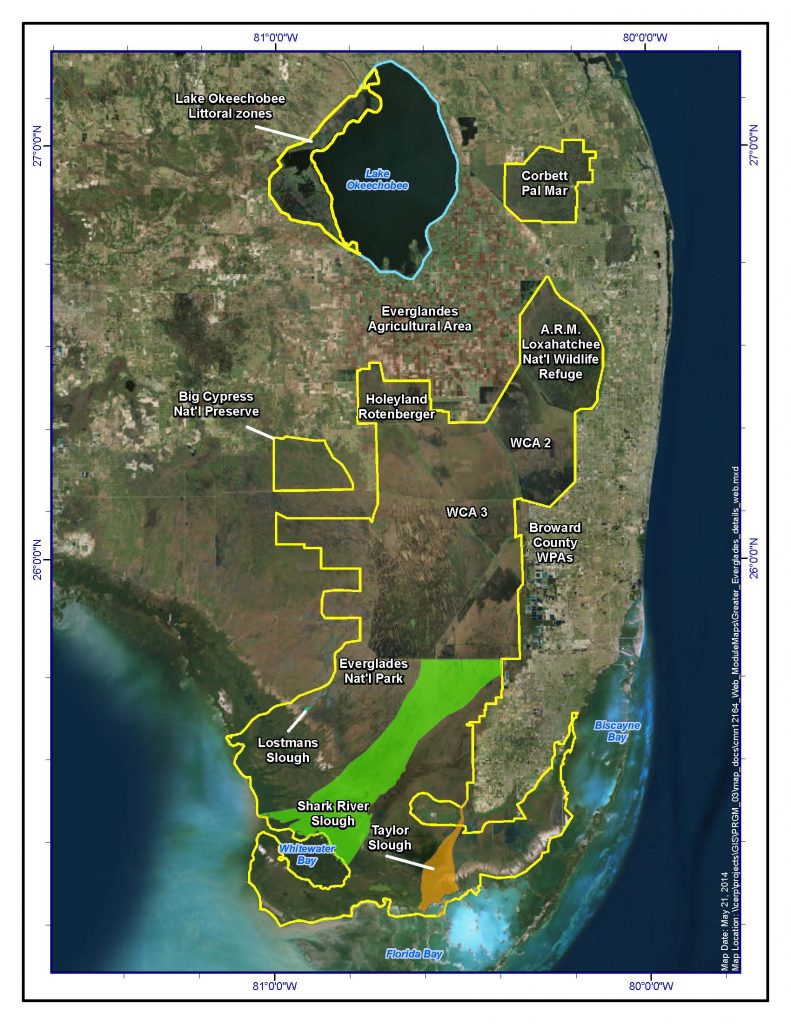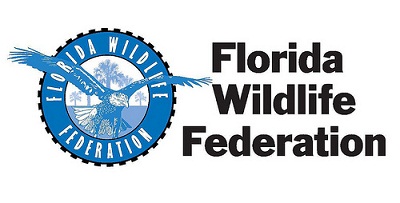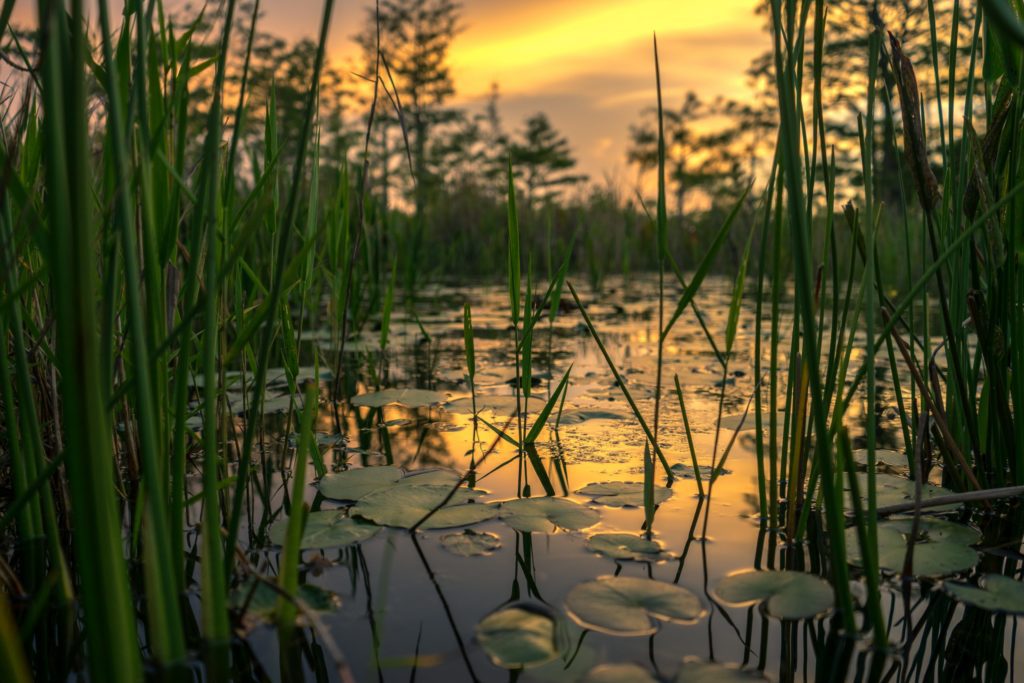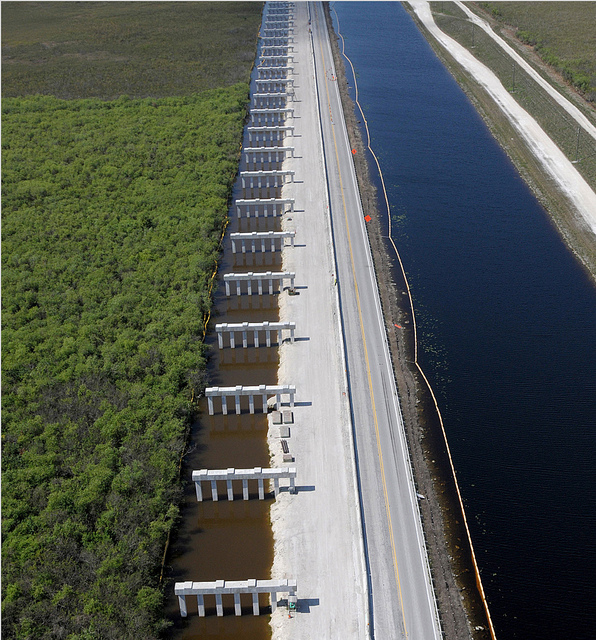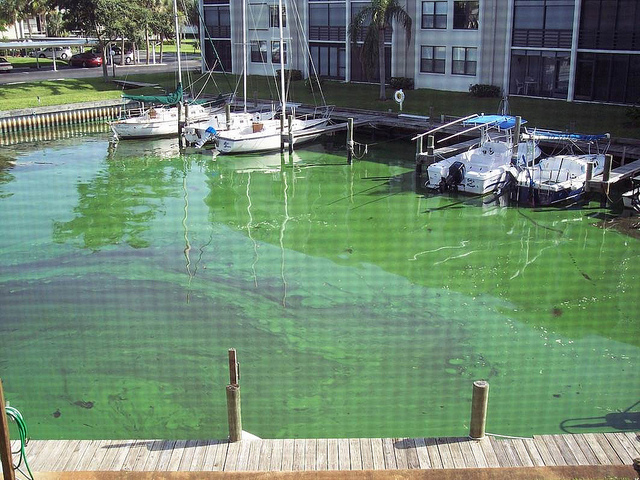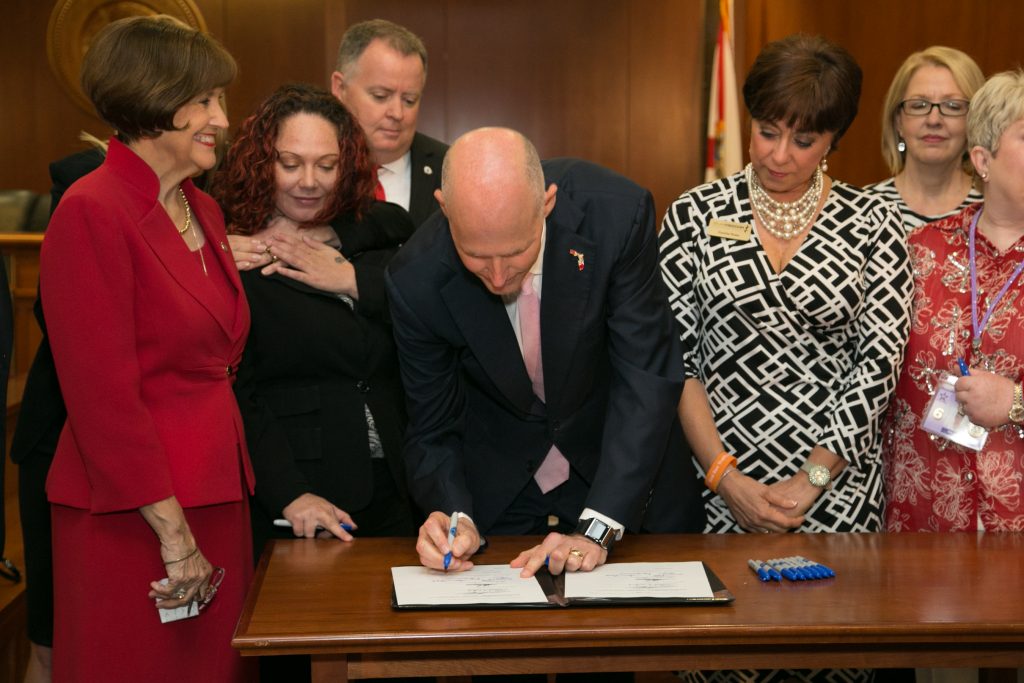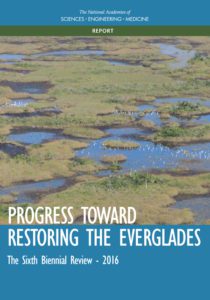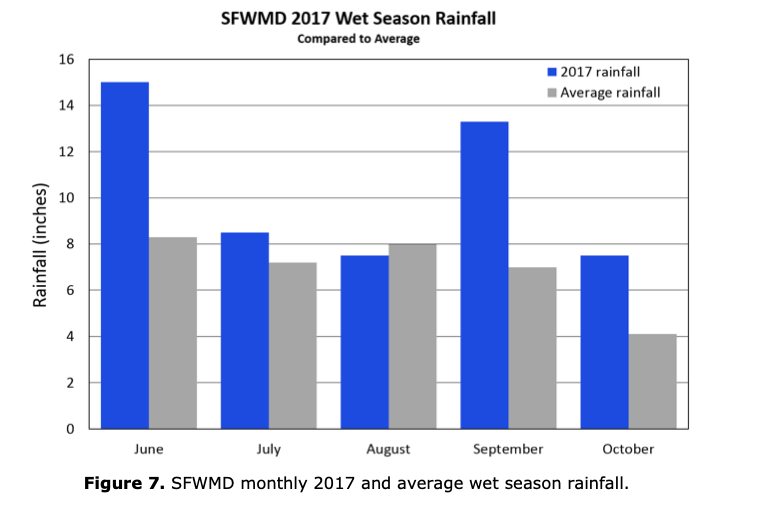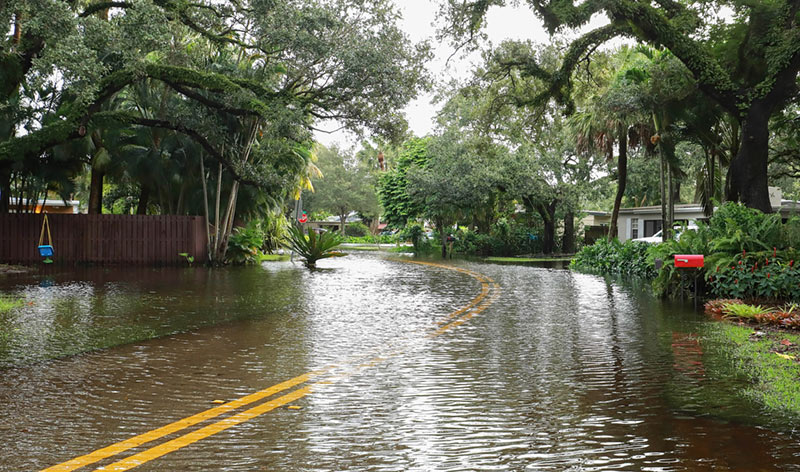Everglades Restoration Timeline
The History of Everglades Restoration
Real estate developer Hamilton Disston buys 4 million acres with plans to drain the land for agriculture. Disston constructed a canal connecting the Lake Okeechobee to Lake Hicpochee, providing the first outlet of water from Lake Okeechobee to tide (through the Caloosahatchee River). Disston’s early efforts spurred development interest in the region and future attempts to drain the Everglades.
At the direction of Governor Napoleon Bonaparte Broward the Everglades Drainage District is created to reclaim the Everglades for agricultural production. Over the following years, the Everglades Drainage District constructed several canals, which continue to divert water from both Lake Okeechobee and the Everglades. These canals include the St. Lucie, North New River, West Palm Beach, and Miami canals.
The state builds the St. Lucie canal to connect the St. Lucie River to Lake Okeechobee.
In September, a hurricane with wind speeds of 125 m.p.h. makes landfall on the coast of Palm Beach and destroys small earthen dikes that had been constructed to prevent Lake Okeechobee from flooding surrounding homes and farmland. About 2,000 residents die, and their deaths and the massive property damage provide the impetus to build a much larger and formidable dike around Lake Okeechobee.
Following two hurricanes in 1926 and 1928, which killed more than 2,500 people, Congress enacted the Rivers and Harbor Act of 1930, authorizing the construction of 67.8 miles of levees along the south shore of Lake Okeechobee and 15.7 miles along its north shore. After another major hurricane in 1947, Congress took additional action to construct a new dike system which was completed in the 1960’s and named the Herbert Hoover Dike. Today the dike system contains 143 miles of levees, gates, and other structures.
An unusually wet summer — which averages about 100 inches along Florida’s lower east coast, almost double the annual average rainfall in the region — is followed by two major hurricanes in September and October.
Congress sets aside 1.5 million acres of conservation land to create Everglades National Park. The park is protected under the National Park Service Organic Act (16 U.S.C. § 1) among other laws.
In her highly influential book, Marjory Stoneman Douglas brings national attention to the degradation of America’s Everglades.
Congress authorizes the C&SF Project providing for a network of more than a thousand miles of canals, levees, and water control structures throughout central and south Florida. These structures, along with previous attempts to drain and ditch the Everglades, reduced the size of the ecosystem by half in the last 100 years. Forty percent of the water that historically flowed into Everglades National Park is now diverted via canals to the ocean or for other uses. The Everglades has been further degraded by phosphorous, nitrogen, and mercury pollution from agricultural, industrial, and urban development. Exotic plant and animal species, many of which would never have been able to flourish in historic conditions, have further compromised the health of the system.
The 1948 C&SF Project established more than 480,000 acres south of Lake Okeechobee as the EAA. This region is now more than 700,000 acres with the vast majority of those acres used for farming sugarcane.
The 1948 C&SF Project also provided for the construction of three Water Conservation Areas known as WCA 1, WCA 2, and WCA 3. Construction was completed in 1962. WCA 1 is now also known as the Arthur R. Marshall Loxahatchee National Wildlife Refuge. WCA 2 and WCA 3 are almost completely enclosed by levees and canals and are used for water storage during high rainfall events, as reservoirs for urban and agricultural uses, and for wildlife habitat and recreation.
The Florida Legislature creates the Central and Southern Florida Flood Control District, the predecessor to the South Florida Water Management District.
The U.S. Fish & Wildlife Service and the South Florida Water Management District enter into a license agreement under the Migratory Bird Conservation Act, establishing Water Conservation Area 1 as a national wildlife refuge. The refuge was renamed the Arthur R. Marshall Loxahatchee National Wildlife Refuge in 1986.
By way of the Flood Control Act of 1962, Congress authorizes the Canal 111 (C-111) South Dade project, located adjacent to the eastern boundary of Everglades National Park, as a modification of the South Dade County portion of the CSF Project to provide flood control to agricultural lands in South Dade County and to discharge flood waters to Taylor Slough in Everglades National Park.
In 1968, Congress authorized modifications to the C-111 Project for the construction of the Everglades National Park-South Dade Conveyance System (enlarged canals and additional structures/pump stations) to provide water supply to Everglades National Park and South Dade County. Environmental concerns — artificially amplified floods were just as destructive as droughts — caused construction to be discontinued before all authorized project features were completed.
Congress enacts NEPA requiring federal agencies to prepare an environmental impact statement (EIS) for every major federal action having a significant impact to the human environment. Agencies are required in an EIS to examine alternatives to the proposed action as well as the proposed action’s direct, indirect, and cumulative effects.
In response to concerns voiced by the Department of the Interior about failing ecosystems in Everglades National Park, Congress approves a “floor” for water to be delivered to the Park through the C&SF Project, guaranteeing a minimum amount of water be delivered to the Park each month of the year.
Following a special water conference convened by Governor Askew in response to water shortages, salt-water intrusion into well fields, and fires in the Everglades, the Florida Legislature enacts the Water Resources Act. Considered by many scholars as one of the most forward-looking, comprehensive, and highly regarded water laws in the nation, Chapter 373, Florida Statutes declares that Florida’s water is held in public trust for the benefit of its citizens and provides for the establishment of water reservations to protect fish and wildlife.
Congress enacts the Clean Water Act to “restore and maintain the chemical, physical, and biological integrity of the Nation’s waters.” The Act provides a comprehensive framework for addressing both point source and non-point source pollution. States are directed, subject to Environmental Protection Agency (EPA) approval, to develop and enforce comprehensive water quality standards establishing water quality goals for all intrastate waters. The Act also requires permits for the discharge of pollutants into navigable waters from point sources (the NPDES program) and establishes a Total Maximum Daily Load (TMDL) program aimed at restoring “impaired” waters that fail to meet water quality standards.
Congress enacts the Endangered Species Act (ESA) “to provide a means whereby the ecosystems upon which endangered species and threatened species depend may be conserved.” The ESA establishes a framework for listing species, protecting their critical habitat, requiring federal agencies to consult with the U.S. Fish & Wildlife Service and/or the National Marine Fisheries Service if their actions may affect a listed species, and prohibiting the “take” of an endangered species without a permit.
The federal government creates the first national preserve in the national park system. This more than 700,000-acre preserve was established following a failed attempt by the state to use the site for a massive jetport.
In November 1983, as a result of adverse effects within Everglades National Park related to high rainfall and water management practices in south Florida, Congress enacts legislation (the Supplemental Appropriations Act) authorizing the “Experimental Program,” which allows the U. S. Army Corps of Engineers (Corps), with consent of the National Park Service and South Florida Water Management District (SFWMD) to deviate from the minimum water delivery schedule established by Congress in 1970, with the goal of improving the location, timing and volume of water deliveries to the Park. The Park had sought to change inappropriate deliveries of water to the Park in the dry season, as well as the limited scope of how water was delivered (through the S-12 structures only).
The federal government sues the South Florida Water Management District and the Florida Department of Environmental Regulation alleging violations of state and federal law regarding pollution (particularly phosphorus) in the Loxahatchee Wildlife Refuge and Everglades National Park. The federal government alleged that the source of the pollution came from four pump stations (S-5A, S-6, S-7 and S-8) that are operated by the SFWMD and divert run-off from the EAA southward into water conservation areas (which include the Loxahatchee NWR).
Congress passes the Everglades National Park Protection and Expansion Act, incorporating Northeast Shark River Slough (east of the L-67 extension) under the jurisdiction of the National Park Service. This legislation also, among other things, authorizes Modified Water Deliveries to Everglades National Park (Mod-Waters Project), which consists of modifications to the CSF Project to improve water deliveries to Everglades National Park. It addresses the delivery of water the the Park through Shark River Slough, and extends east to the L-31N Canal down to the S-331 structure.
The FWS concludes that the Mod-Waters Project, as proposed, will jeopardize the Everglade Snail Kite and issues a reasonable and prudent alternative.
The Everglades Protection Act directs the State to establish and implement the Surface Water Improvement and Management (SWIM) plan to restore the Everglades. This plan served as the precursor to the Comprehensive Everglades Restoration Plan (CERP) enacted by Congress in 2000. SWIM provided a roadmap for complying with water quality standards and restoring hydroperiods and established a permitting program for discharges into the Everglades Protection Area. It also allowed the SFWMD to impose additional ad valorem taxes on properties within the EAA and to adopt stormwater utility fees.
Congress authorizes the Corps to study the effectiveness of the C&SF Project, eventually leading to the publication of the Central and Southern Florida Comprehensive Review Study (also known as the Comprehensive Everglades Restoration Plan or CERP) in 1999.
Congress authorizes the restoration of the Kissimmee River ecosystem, which had been degraded by dredging and channelization beginning in the 1960s. This nearly $1 billion project was sponsored by the Corps and the SFWMD and sought to restore more than 40 square miles of historic oxbows and flood plain. As of 2018, the project is more than 90% complete and the Corps has determined that the project has surpassed expectations in many respects.
The parties to United States v. South Florida Water Management District, 847 F. Supp. 1567 (S.D. Fla. 1992) enter into a consent decree approved by Judge Moreno. Based upon the requirements of the Everglades Protection Act enacted a year earlier, the consent degree requires the construction of a minimum of 32,000 acres of stormwater treatment areas (STAs) and the use of best management practices in the EAA to achieve water quality standards for phosphorus by July 2002. STAs are large, engineered wetlands used to treat water flowing into the Everglades. They improve water quality by naturally filtering out pollutants such as phosphorus.
The Corps finalizes the GDM, a plan — required by the 1989 Everglades National Park Protection and Expansion Act — to modify operations of the C&SF Project with a rainfall driven schedule, along with some structural modifications.
The Florida legislature enacts the Everglades Forever Act. The Act eliminates the SWIM plan and establishes a narrative water quality standard for phosphorus that prohibits waters in the Everglades Protection Area to be altered so as to cause an imbalance in the natural populations of aquatic flora and fauna. It also sets a default numeric nutrient water quality standard of 10 parts per billion of phosphorus if the state otherwise does not adopt such a rule by December 31, 2003. The Act extends the deadline for compliance with the phosphorus standard until 2006. The Act also modifies many of the construction, operation, and compliance deadlines set forth in the consent decree and establishes a schedule for the construction of STAs.
Pursuant to the 1992 Consent Decree the State agrees to build and operate a minimum of 32,600 acres of STAs and to require farmers to use BMPs to reduce nutrient pollution.
In May 1994, the Corps finalizes its Final Integrated General Reevaluation Report for the C-111 Project. The C-111 Project boundary is that portion of the C&SF Project including and south of the S-331 structure.
In October 1995, the FWS concludes that Test 7 of the 1983-approved Experimental Program (which would have added to changes already explored in earlier tests, changing flows through the L-31W canal into Taylor Slough) would jeopardize the Cape Sable seaside sparrow. It asks the Corps to develop a Remedial Action Plan. Tests 1-5 had involved changing how water was delivered from WCA 3 to western and northeastern Shark River Slough. Test 6 had additionally involved water deliveries into Taylor Slough.
Following a ballot initiative, the Florida Constitution is amended providing “Those in the Everglades Agricultural Area who cause water pollution within the Everglades Protection Area or the Everglades Agricultural Area shall be primarily responsible for paying the costs of the abatement of that pollution.”
In WRDA 1996, Congress authorizes continued planning for CERP as well as changes to the C-111 Project, consistent with the 1994 Final Integrated General Reevaluation Report.
Following a ballot initiative, the Florida Constitution is amended providing for the administration of a trust fund administered by the South Florida Water Management District for the purposes of conservation and protection of natural resources and abatement of water pollution in the Everglades Protection Area and the Everglades Agricultural Area. It can be funded by any source, including gifts and state and federal funds.
In November 1997, the Corps agrees to reinitiate consultation under the ESA on the Mod-Waters Project and the Experimental Program, because of concerns related to a variety of endangered and threatened species including the Cape Sable Seaside Sparrow and the Wood Stork. The Corps recommends delaying reinitiation of consultation on the C-111 Project, as operating plans are still being developed.
In February 1999, the FWS issues a Biological Opinion regarding the Mod-Waters Project, the Experimental Program, and the C-111 Project. Evaluating the effects of construction features only, because operations had not been developed for the three projects, the FWS found they would both jeopardize the Cape Sable Seaside Sparrow and adversely modify its critical habitat.
In a document commonly known as the “Restudy” or “Yellow Book” the Corps and SFMWD identify more than 60 projects to improve the quality, quantity, timing, and distribution of water through the Everglades. These projects include:
- A 200,000 acre-foot reservoir north of Lake Okeechobee;
- A 50,000 acre-foot reservoir and 20,000 acre-foot STA in the Taylor Creek/Nubbin Slough Basin;
- 200 Aquifer Storage and Recovery (ASR) wells around Lake Okeechobee;
- A 160,000 acre-foot reservoir and 44 ASR wells in the C-43 basin;
- A 40,000 acre-foot reservoir in the St Lucie/C-44 basin and 349,400 acre-feet of above ground reservoir in the C-23, C-24, and C-25 basins;
- A 360,000 acre-foot reservoir in the EAA.
The Restudy was submitted to Congress, which led to the passage of the Comprehensive Everglades Restoration Plan the following year.
Following the state’s failure to establish total maximum daily loads (TMDLs) for many waters throughout the state and a lawsuit by environmental organizations, the court approved a consent decree directing the EPA to establish TMDLs for over five hundred waters on Florida’s list of impaired waters under section 303(d) of the Clean Water Act.
The Florida legislature directs FDEP to evaluate state waters and establish TMDLs for waters with impaired water quality. FDEP may develop basin management plans to achieve these TMDLs and promulgate rules establishing BMPs.
Federal and state agencies agree to purchase approximately 50,000 acres of former sugar plantation land for Everglades restoration.
Following both repeated emergency deviations from Experimental Program Test 7 operations to protect endangered species and high level consultation among various agencies, the Corps implements the Interim Structural and Operational Plan (ISOP), as an Emergency Deviation from Test Iteration 7 of the Experimental Program to protect the Cape Sable seaside sparrow.
To undo much of the environmental damage caused by the C&SF Project, Congress passes the Water Resources Development Act of 2000 (WRDA 2000) and approves CERP. Under CERP, the Corps and SFWMD, in consultation with other Federal, state, and local agencies, are charged with restoring the South Florida ecosystem by improving the quantity, quality, timing, and distribution of water entering the natural system.
The Save Our Everglades Trust Fund is established within the Department of Environmental Protection. The funds are to be spent on implementing CERP, as well as other projects including the Lake Okeechobee Watershed Protection Plan, the Caloosahatchee River Watershed Protection Plan, and St. Lucie River Watershed Protection Plan, among others.
The state legislature directs FDEP, SFWMD, and Florida Department of Agriculture and Consumer Services (FDACS) to establish programs to restore and protect Lake Okeechobee. The Act directs the agencies to establish the Lake Okeechobee Protection Plan to provide an implementation schedule for achieving the TMDL established for the Lake (140 metric tons of phosphorous per year) by 2015. The Act also includes several other programs and projects including the Lake Okeechobee Construction project.
Florida’s premier land acquisition program is established in July. To date the state has purchased more than 718,126 acres of land for conservation under this program.
The state had moved the court in United States v. South Florida Water Management District (S.D. Fla. 1992) to modify the 1992 consent decree following the enactment of the Everglades Forever Act. The court grants the state’s request in an April 27, 2001 Omnibus Order. The new timeline mirrors the timeline established in the 1994 Everglades Forever Act, including the deadline for compliance with the 10 ppb phosphorus water quality standard at the end of 2006. The modified consent decree remains in effect and under the jurisdiction of the court. A special master is appointed to oversee compliance with the consent decree.
A proposal to develop a commercial airport between Everglades National Park and Biscayne National Park is rejected by the Air Force, following extensive opposition from nearly fifty environmental organizations as well as other federal agencies.
Federal and Florida agencies reach agreement and finalize the IOP to replace the ISOP.
In December 2002, several environmental groups challenged the Corps’ approval of permits to 12 mining companies that approved rock mining on more than 5,000 acres of land in the historic Everglades. The case was filed in federal District Court in the District of Columbia, and then transferred to the Southern District of Florida in 2003.
In September 2002, the Miccosukee Tribe challenges the Corps’ approval and implementation of IOP in federal court in Florida under various federal environmental and other laws, including nuisance under federal common law and the Indian Trust doctrine.
The Natural Resources Defense Council and several other environmental organizations (the NRDC Intervenors) intervene in the Moore Case 1 in 2003. The intervenors also file their own cross-claim, demanding the expeditious implementation of “marsh operational criteria” — operational rules that would maintain water levels in the new reservoirs high enough to stop seepage from the west out of the Everglades but not so high as to increase polluted discharges into the Everglades from the east.
The Corps adopts final rules to implement CERP and to ensure its goals and purposes are achieved.
SFWMD adopts a plan (Conceptual Plan) to extend the final deadline for achieving the 10 ppb phosphorus standard to 2026.
The Florida legislature amends the Everglades Forever Act to adopt SFWMD Conceptual Plan and establishes a 2016 deadline for meeting the phosphorus standard with the option of extending it to 2026.
Plaintiffs file suit to compel EPA to review and disapprove Florida’s amended Everglades Forever Act, claiming it establishes new water quality standards that differ from those previously in place under the Clean Water Act.
In early 2004, Florida announces plan to “expedite” construction of eight projects or groups of projects, comprising 11 CERP projects and one non-CERP project the State deems particularly important.
In the 2004 Gold Case, the court holds that the Everglades Forever Act amendments constitute new or revised water quality standards and EPA must approve or disapprove these standards. The numeric standard for phosphorus entering the Everglades Protection Area (10 ppb) is upheld.
Environmental groups challenge the Corps’ decision to issue a dredge and fill permit under the Clean Water Act for the construction of a biotech facility in western Palm Beach County. The court invalidates the Corps’ decision finding that the agency failed to take the necessary “hard look” at the cumulative effects of the project under NEPA. The biotech facility is subsequently relocated to Jupiter and the former site (“Mecca Farms”) was later purchased by the SFWMD where it will be used to restore freshwater flows to the Loxahatchee River as part of Everglades restoration.
The Army Corps of Engineers begins repairing this aging structure to reduce the risk of catastrophic failure, which would threaten communities to the south. This more than $500 million project is expected to be completed by 2025.
Judge Moreno finds phosphorus levels have been exceeded in the Loxahatchee National Wildlife Refuge.
Judge Hoeveler overturns Corps’ decision to issue permits allowing more than 5000 acres of historic Everglades wetlands in the Lake Belt area to be mined for rock to be used in roads and other construction projects and sets evidentiary hearing to determine appropriate remedy. The court issues an order setting various remedies in 2007. Sierra Club v. Strock, 495 F. Supp. 2d 1188 (S.D. Fla. 2007)
The Court orders that the Corps complete a Supplemental Environmental Impact Statement (SEIS) to assess the effects of the changes from IOP Alternative 7 to Alternative 7R (relief requested by both the Miccosukee Tribe and the NRDC Intervenors), as well as additional update on the implementation of marsh operational criteria to protect the Everglades and endangered and threatened species.
In response to Moore Case 1, the Corps completes an SEIS for the IOP. As part of that process, the FWS develops a Biological Opinion evaluating whether the IOP would jeopardize endangered or threatened species or adversely modify their critical habitat. This Biological Opinion is to remain in place for only four years — until November 2010.
Judge Altonaga concludes that “back-pumping” water from the EAA canals through the S-2, S-3, S-4 pump stations and into Lake Okeechobee without a NPDES permit violates the Clean Water Act. The court later orders the SFWMD to “apply…for a NPDES permit forthwith.”
Environmental groups challenge the Corps’ approval of Florida’s plan to build CERP projects — in particular, a portion of the EAA Reservoirs Project, a project that would provide 360,000 acre-feet of water storage in the central Everglades — without complying with the rules to protect for Everglades ecosystems the water those projects make available. Florida’s Acceler8 Plan, through which Florida intended to implement the EAA Reservoirs Project, does not include the same protections that CERP does — specifically, “reservations” to ensure that newly made available water identified and then “dedicated and managed” for the Everglades in fact is dedicated and managed for the Everglades.
In 2007, the Miccosukee Tribe amended an earlier (November 2005) complaint that had challenged the FWS’s 2002 Biological Opinion approving the IOP. The amended complaint includes additional challenges to a Biological Opinion included in the SEIS that the Corps completed in response to the Moore EIS case. The court rejects the Miccosukee Tribe’s claims, and the Tribe appeals.
IRL-South Project. Congress authorizes the IRL-South Project to improve water quality in the St. Lucie Estuary and IRL. The project includes four reservoirs (totaling 130,000 acre feet of storage), four STAs (totaling 8,700 acres), 90,000 acres of habitat restoration, muck removal from the north and south forks of the St. Lucie River, and redirection of water from the C-23/24 basin to the north fork of the river.
The first phase of the project (expected to be completed by 2020) is construction of the C-44 reservoir and an associated STA. Other project components have not yet received authorization from congress.
The Picayune Strand Project. The Picayune Strand project is authorized by Congress and becomes the first CERP project under construction. The project seeks to restore more than 55,000 acres of wetlands and uplands in the former Golden Gates Estates planned residential community in southwest Florida. The development failed in the 1960s and the land was later purchased by the State of Florida in the 1980s.
Site 1 Impoundment Project. Congress authorizes the Site 1 Impoundment Project to capture and store excess surface water runoff from the Hillsboro watershed as well as releases from the Arthur R. Marshall Loxahatchee National Wildlife Refuge and Lake Okeechobee. These additional sources of water help to reduce water supply demands on the Loxahatchee National Wildlife Refuge. Phase 1 of the project is now complete.
The state legislature expands the Lake Okeechobee Protection Act of 2000 to include projects to restore and protect the Caloosahatchee and St. Lucie Rivers and Estuaries. The Act includes, among other projects, the Phase II Technical Plan of the Lake Okeechobee Watershed Construction Project, the St. Lucie River Watershed Protection Plan, and the Caloosahatchee River Watershed Protection Plan.
The Phase II Technical Plan: Identifies construction projects and other measures to reduce the amount of pollution entering the Lake. It also identifies the need for more storage north of Lake Okeechobee (900,000 to 1.3 million acre-feet) to reduce discharges into the estuaries. This includes above-ground reservoirs, underground storage, and alternative water storage projects on public and private lands.
The St. Lucie River Watershed Protection Plan: Aimed at reducing nutrient loads into the watershed. It calls for implementation of BMPs on agricultural and urban lands, construction of 11,800 acres of reservoirs and 8,500 acres of STAs, restoration of 95,000 acres of wetlands and natural areas within the St. Lucie watershed, muck removal, and an additional 200,000 acre feet of water storage within the watershed.
The Caloosahatchee River Watershed Protection Plan: Similarly calls for BMPs, construction of 36,000 acres of reservoirs and 15,000 acres of STAs, wetland restoration, and an additional 400,000 acre-feet of water storage in the watershed.
The 11th Circuit vacates Judge Hoeveler’s 2006 and 2007 rulings in the Lake Belt case, holding that the court failed to give the Corps the level of deference required by federal laws. It remanded for the lower court to reconsider the record in light of the more deferential standard of review.
Under a deal worth $1.75 billion, state water managers would acquire 187,000 acres of sugarcane fields and other agricultural lands south of Lake Okeechobee for Everglades restoration.
The SFWMD completes its study of the amount of storage needed to reduce the discharges to the Caloosahatchee and St. Lucie estuaries and to move more water south. The SFWMD concludes that approximately 1 million acre feet of storage is needed to reduce the discharges by 90% and provide approximately 350,000 acre feet of additional flow to the Everglades each year.
Under the C&SF project, the Corps establishes a regulation schedule for Lake Okeechobee. This regulation schedule guides the Corps in its management of the lake for flood control, water supply, and protection of the natural system. Prior to LORS there were several lake regulation schedules. Most recently they included the Water Supply and Environment (WSE) schedule from 2000-2008 and Run 25 from 1994-2000. LORS remains in effect and sets the lake levels between 12.5 and 15.5 feet above mean sea level.
Following Judge Altonaga’s decision finding that SFWMD must apply for an NPDES permit to backpump water from EAA canals into Lake Okeechobee, EPA promulgates the “water transfer rule” exempting the transfer of water between two water bodies from NPDES permitting requirements.
The original deal is revised to include a purchase of 72,800 acres with the option of purchasing a remaining 107,000 acres at a later date.
In response to the 2008 court order in the 2004 Gold case finding portions of the Everglades Forever Act to be water quality standards, EPA disapproves of parts of those amendments as water quality standards and began rulemaking to place the disapproved standards.
On remand from the 11th Circuit’s decision vacating the district court’s 2006 and 2007 orders invalidating 12 permits allowing mining in the Lake Belt region of the historic Everglades, the district court again rejects the permits, using a more deferential standard of review, and remand to the agency to revisit its decisions. (Case No. 03-23427-CIV-Hoeveler) The 11th Circuit upholds this decision in January 2010.
The Eleventh Circuit Court of Appeals reverses Judge Altonaga’s decision and rules that backpumping water from the EAA canals into Lake Okeechobee does not require an NPDES permit after applying deference to the EPA’s newly promulgated “water transfers rule.”
The federal district court dismisses the EAA A-1 Reservoir Case (NRDC et al. v. Van Antwerp et al. (Case No. 07-80444-CIV-MIDDLEBROOKS)) because the reservoir is no longer being built pursuant to the Corps permit the environmental groups had challenged. As a result, the court finds the case no longer presents a live controversy and is “moot.”
In May 2009, the Eleventh Circuit Court of Appeals partially grants the Miccosukee Tribe’s appeal of a lower court order (a second challenge the Miccosukee Tribe filed related to IOP implementation)(Moore Case 2) related to the IOP and requires additional analysis by the FWS to support incidental take triggers — triggers that, when surpassed, require the reinitiation of consultation under the ESA about the effects of an action on endangered or threatened species. According to the Court, biological opinions must include numerical targets (i.e., a projection of how many individual members of a species may be taken) where possible.
The Southeast Regional Florida Climate Change Compact involves 4 counties and 109 cities, comprising ⅓ of Florida’s population. Focus is addressing sea level rise, extreme weather events and flood risk.
In response to the 11th Circuit Court of Appeals’ January 2010 opinion affirming a lower court decision rejecting 2001 permits the Corps had issued to several mining companies, the Corps approves a revised mining and mitigation plan and issues new permits allowing mining in the Lake Belt area of the historic Everglades.
The State buys 26,800 acres from U.S. Sugar with a ten-year option for the SFWMD to buy a remaining 153,200 acres.
Over a challenge by environmental groups, Center for Biological Diversity et al., v, Kenneth Salazar et al., a D.C. district approves the FWS’s designation of critical habitat for the Cape Sable Seaside Sparrow, despite the agency’s decision to exclude habitat of the only subpopulation situated west of northwest Shark River Slough. The designation had come in response to an earlier case filed by environmental plaintiffs: Biodiversity Legal Found. v. Norton, 285 F. Supp. 2d 1, 14 (D.D.C. 2003).
On remand from the 11th Circuit (in Moore Case 2), the Corps and FWS continue to use habitat triggers to define the triggers that would require reinitiation of consultation to assess the effects of an action on the endangered and threatened species at issue. Judge Moore rules that the Corps’ approach is acceptable for the Everglade Snail Kite and the Wood Stork, but not for the Cape Sable Seaside Sparrow, requiring the triggers to again be reconsidered for that species.
Because SFWMD stopped construction of the EAA A-1 Reservoir while land purchase negotiations with U. S. Sugar were ongoing, the court dismisses as moot the environmental groups’ challenge to Florida’s plan to construct a portion of the EAA Storage Reservoirs project without complying with WRDA 2000’s Everglades protection rules. The court leaves open the possibility of reopening the case if construction starts again, and notes that the Acceler8 Program had slowed, and to the extent it is continuing, projects were also being implemented in compliance with the protections WRDA 2000 had required.
The court in the Gold Case finds the 2009 EPA Determination did not comply with the court’s previous order. The Court orders the EPA to issue an amended determination that prohibits FDEP from issuing NPDES permits for STAs that discharge into the Everglades Protection Area until the FDEP is in compliance with the Clean Water Act.
Following this ruling, EPA issues its Amended Determination, which notifies FDEP that the narrative and numeric nutrient criteria for phosphorus are not being met in the Everglades Protection Area. The Amended Determination among other things establishes for the first time a water quality based effluent limitation (WQBEL) for discharges into the Everglades Protection Area. The WQBEL must be included in all permits for discharges from the STAs into the Everglades Protection Area.
Upholding a special master’s report, Judge Moreno reverses a 2010 order compelling the construction of the EAA-1 Reservoir, finding instead that construction of the reservoir is “no longer in the best interest of the Everglades.”
The Florida Fourth District Court of Appeal reverses two lower court decisions upholding the issuance of development orders to permit hard rock mining in the EAA. The Court finds the development orders are inconsistent with the local comprehensive plan. The Court also affirms a lower court decision finding that mining in the EAA is inconsistent with the local comprehensive plan.
Judge Gold grants EPA’s motion to amend his previous order and finds that EPA has made a “more committed effort” to comply with the 2010 order. The Court eliminates the requirement that EPA withdraw FDEP’s authority to issue NPDES permits.
A federal appeals court rules against twenty-three property owners, finding that a lower court lacked jurisdiction over their claims that the discharge of polluted water from Lake Okeechobee into the St. Lucie estuary constituted a taking of private property. The court found the claims were barred by a six-year statute of limitations and that the claimants failed to establish any compensable riparian property rights.
The EPA and the State of Florida reach agreement on the development of “Restoration Strategies” to ensure compliance with water quality standards for the Everglades Protection Area. The plan calls for the creation of 6,500 acres of new STAs and Flow Equalization Basins (FEBs) to provide an additional 116,000 acre-feet of temporary water storage and water treatment. FEBs are intended to attenuate peak stormwater flow, temporarily store the water, and release it into the STAs.
A federal court rules on long running disputes regarding the need for Florida to promulgate numeric water quality standards. In 2008, conservation organizations had sued EPA under the CWA for failing to establish numeric nutrient water quality criteria for most of the state’s waters (after the state had also failed to do so). In 2009, EPA enters into a consent decree with the plaintiffs agreeing to promulgate new criteria. The State later developed new criteria, which EPA approved, and conservation organizations challenged. The federal court upheld several of the new criteria while invalidating others (which the State has now revised).
The ERTP — explicitly designed as a multi-species management plan — replaces the IOP as the operational plan for the southern portion of the C&SF Project. It sets forth desired habitat ranges and goals for multiple species and establishes a periodic scientists call, in which agency experts evaluate current conditions and make decisions about what water flows to allow, in accordance with the ERTP’s guidance. Its Biological Opinion is set to expire in 2016.
The U.S. Fish and Wildlife Service establishes a new national wildlife refuge in Okeechobee, Osceola, Polk, and Highlands counties to “protect and restore of the great grassland and savanna landscapes of eastern North America.” Utilizing a working landscape level conservation approach, the refuge will protect up to 50,000 acres of lands in fee-simple and another 100,000 acres through conservation easements.
The Corps completes a one-mile long bridge on Tamiami Trail. When completed, the 6.5 miles of bridging will allow water to flow under Tamiami Trail and into northeast Shark River Slough. The road, which was originally constructed to provide a faster route from Tampa to Miami, has long impeded the flow of water through Everglades National Park.
More than 5,000 people gather at the St. Lucie Lock and Dam to protest the discharge of polluted water from Lake Okeechobee into the St. Lucie Estuary. The practice, which has occurred since at least the 1950’s, is intended to reduce water levels in Lake Okeechobee during periods of high flow. In 2013, the discharges led to toxic algae blooms which had a significant impact on local businesses, often referred to as the “Lost Summer of 2013.”
By a 3:1 margin, Florida voters pass the Water and Land Conservation Initiative, which sets aside 33% of state fees on real estate transactions (“doc stamps”) for conservation purposes. Amendment 1 is expected to generate approximately $20 billion over the next 20 years.
WRDA 2014 authorized four CERP projects, with total estimated costs of $1.9 billion: the C-111 Spreader Canal, Biscayne Bay Coastal Wetlands, C-43 West Basin Storage Reservoir, and Broward County Water Preserve Areas (WPAs). Two of these (C-43 Reservoir and Broward County WPAs) were new projects, whereas the two others (the C-111 Spreader Canal and Biscayne Bay Coastal Wetlands) were previously initiated by the state but required congressional authorization for federal participation. As of early FY2017, construction had been initiated or planned for initiation for all four projects.
A federal judge in New York strikes down the “water transfers rule” as an unreasonable interpretation of the Clean Water Act. The decision is appealed to the Second Circuit Court of Appeals.
The SFWMD declines to exercise an option to purchase any additional lands, effectively putting an end to the deal reached in 2008.
In 2014, the Florida Senate authorized an independent technical review of the options to reduce the discharges into the coastal estuaries and move more water into the Everglades. The report identifies the need for 400,000 acre-feet of storage within the Caloosahatchee River watershed, 200,000 acre-feet of storage within the St. Lucie River watershed, and approximately 1 million acre-feet north and south of Lake Okeechobee.
The Florida legislature passes House Bill 989, signed into law by Governor Scott. The legislation dedicates up to $200 million funding a year for Everglades restoration.
Congress authorizes CEPP in the Water Infrastructure Improvements for the Nation (WIIN) Act. CEPP is aimed at delivering more natural freshwater flows to the central Everglades and ultimately to Florida Bay. The project calls for the construction and operation of two 14,000 acre FEBs that will store water, attenuate high flows, and deliver it to STAs. After treatment in STAs, the water will be distributed through WCA 3A and WCA 3B and Everglades National Park through a newly created (Blue Shanty) Flow-way.
The Army Corps of Engineers completes another (2.5 mile) segment of bridging on Tamiami Trail to restore water flow through Everglades National Park.
In its sixth biennial assessment of CERP, the National Academies calls for a re-examination of the original restoration goals in light of the scientific community gaining new knowledge on pre-drainage hydrology, climate change, and sea-level rise. The report also recommends a system-wide analysis of restoration outcomes across a range of scenarios.
In July 2016, the Corps and FWS complete their reinitiation of consultation on how C&SF Project operations affect several endangered and threatened species and agree on a reasonable and prudent alternative to ERTP in response to multiple factors: 1) the 2012 ERTP Biological Opinion was expiring; 2) one of the reconsultation triggers in the 2012 Biological Opinion had been surpassed in 2014, triggering the need to re-initiate ESA consultation; and 3) a pending challenge by environmental groups to the 2012 Biological Opinion. The revised operations, which include a suite of changes to better protect Cape Sable seaside sparrows in subpopulation A, which live west of northeast Shark River Slough, are to implemented in ongoing processes to revise operations as part of the long-running Mod-Waters Project.
Declaring that an emergency exists in the St. Lucie and Caloosahatchee estuaries due to the discharges from Lake Okeechobee, the legislature directs the SFWMD to design and construct a reservoir providing at least 240,000 acre-feet of water storage south of the lake. The legislation establishes a timeline the SFWMD must meet to implement the project.
The Second Circuit Court of Appeals reverses the district court’s decision from 2014 that vacated the “water transfers rule.” The appeals court finds that the rule is a reasonable interpretation of the Clean Water Act. The rule remains in effect.
Emergency operations (deviations from the incremental changes approved as part of the Mod-Waters/Combined Operations Plan process) are approved for the C&SF structures south of Tamiami Trail as a result of extreme rains raising water levels throughout the South Florida ecosystem — June-October is the wettest wet season on record, wetter even than 1947.
The Corps approves and implements Mod-Waters Increment 1.1-1.2, incorporating and implementing the July 2016 ERTP Reasonable and Prudent Alternative and effectively replacing ERTP as the operating plan for the southern portions of the C&SF Project. It is explicitly the first part of a 3-year plan to implement Mod-Waters Project operations. Increment 1.1-1.2 is to go into effect in March 2017; Increment 2 is slated to go into effect in March 2018; and the Combined Operations Plan (“Increment 3”) is set to go into effect in 2019.
In February, construction of flood protection infrastructure for the 8.5 square mile area (also known as the Las Palmas Community) as part of the Mod-Waters project is completed, with the goal of allowing additional flow to move through Northeast Shark River Slough towards Everglades National Park.
In March, Mod-Waters Increment 2 begins. This second phase of the Mod-Waters project builds on data collected during Increment 1.1-1.2 and allows further raising of the operating limit of the L-29 Canal toward the goal of 8.5 ft NGVD.
This year’s nesting season boasts the highest number of nesting wading birds since systematic tracking began in 1995 and harkens back to stories of large nesting events from the 1940s.
Congress passed a Water Resources Development Act (WRDA 2018) approving a revised version of the Everglades Agricultural Area Storage Reservoir Project as an addendum to CEPP. It modifies CEPP to include a 23 foot deep reservoir, a stormwater treatment area and conveyance improvements in lieu of CEPP’s Flow Equalization Basin (FEB). The goal of the project is to further reduce water releases from Lake Okeechobee to the eastern and western estuaries and increase water flowing south to Everglades National Park. Congress directs the Army Corps to address remaining issues before proceeding to construction.
With improving conditions during the Kissimmee River Restoration, there is an increased inflow of freshwater to Lake Okeechobee. This increased flow allows for four times the growth of non-invasive aquatic vegetation in 2019, and the vegetation is predicted to keep growing to benefit the St. Lucie and Caloosahatchee estuary freshwater flow.
A bipartisan group of United States Senators and Representatives from Florida jointly request a new C&SF Project Flood Control Restudy that would integrate the potential impacts of sea level rise and generally higher water tables into the engineering and design of improved flood control features.
Reports find that wildlife and submerged aquatic vegetation struggle to recover even two years after Hurricane Irma descended on South Florida, increasing suspended solids in the lake and uprooting vegetation.
In June, individuals living and working in and near the Everglades Agricultural Area filed a federal class-action lawsuit against multiple sugar companies alleging harm from long-standing annual sugar cane burns on the EAA farms and seeking money to redress that harm.
SFWMD endorses the Army Corps’ request for $6 million in funding over four years through a “Section 216 Initial appraisal” to evaluate needed changes to the Central and Southern Florida Project to address rising sea level, climate change, land development and population growth.
The Army Corps issues its final recommendation — officially called the “Report to Address Concerns, Recommendations, and Conditions Identified in the Assistant Secretary of the Army for Civil Works (ASA(CW)) Review Assessment” — regarding the proposed plan to amend CEPP to incorporate the revised EAA reservoir design and related components (set forth in Section 1308(b) of Water Resources Development Act of 2018).
Increment 3 of the Mod-Waters project (also referred to as Combined Operations Plan) begins in August. Water levels are allowed to rise further in the L-29 canal, with more flow directed through Northeast Shark River Slough. The plan allows for deviations from normal operations when water levels in Water Conservation Area 3A rise past an “extraordinary high water line”.
An extremely “wet” dry season at the end of 2020 — including, in November 2020 rainfall 319% more than normal — precedes the Army Corps’ decision to approve a temporary deviation from the newly approved COP that allowed significant water flows through Cape Sable seaside sparrow habitat in western shark slough to reduce water levels in Water Conservation Area 3A. High water levels in the 8.5 square mile area (the Las Palmas community) limit the Corps’ authority to flow water into Northeast Shark River Slough, as COP would generally require.
In a lawsuit filed in 2019 by the Center for Biological Diversity, the Calusa Waterkeeper, and the Waterkeeper Alliance, Federal District Judge Middlebrooks reviewed the Corps’ analysis of potential impacts of red tide and toxic cyanobacteria blooms in its decision to approve Lake Okeechobee operations. He concludes that the Corps violated the Endangered Species Act and orders the Corps to analyze the impact of red tide and toxic Cyanobacteria blooms on endangered and threatened species in these fresh and saltwater ecosystems.
The Army Corps announces the approval of a planned deviation from the water control plan for Lake Okeechobee and the Everglades Agricultural Area, also known as the Lake Okeechobee Regulation Schedule (LORS 2008), in order to reduce risk from Harmful Algal Blooms (HABs). The Corps approved the planned deviation from LORS 2008 in anticipation of and following freshwater HABs, to help reduce the risk of potential concerns associated with algal blooms in Lake Okeechobee, the St. Lucie, and Caloosahatchee estuaries. The announcement states that implementation of this deviation could begin in February 2021 at the earliest.


